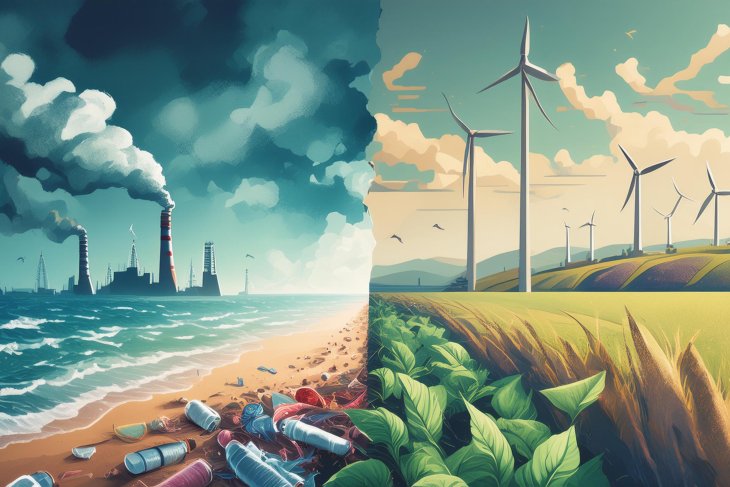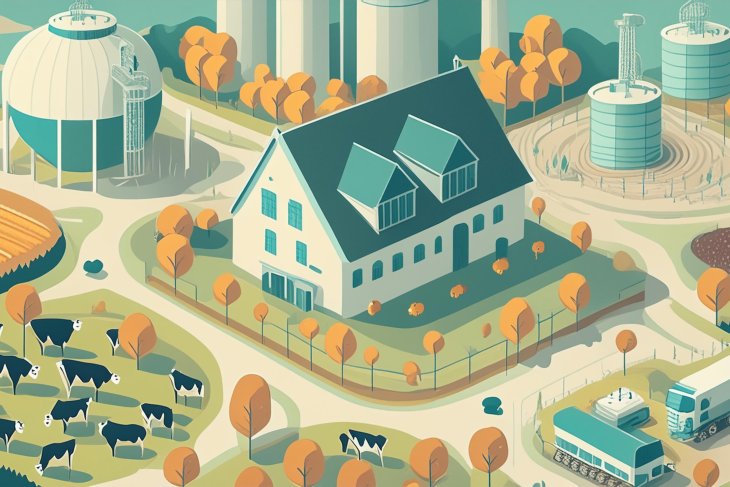Beyond recycling
To achieve a circular economy for plastics, recycling and reusing conventional plastics should be a major goal. Another equally important element is biodegradable plastic.
“To achieve true circularity, we need a materials transition. Even in a highly efficient recycling system, some materials are inevitably lost during sorting, processing, and remanufacturing,” explains Prof. Dr. Frederik Wurm, chair of the Sustainable Polymer Chemistry (SPC) group at the University of Twente. “This leakage means that some amount of plastic is either discarded or becomes unusable, which reduces the efficiency of the recycling system. Recycling is important but isn’t a complete solution. Biodegradation can be our safeguard.”
Biodegradable polymers for eco-friendly agriculture
“Biodegradable and biobased materials have been the focus of our research group over the past few years. Our goal is to achieve a sustainable lifecycle of polymers, where the materials degrade safely at the end of their life, leaving behind non-toxic byproducts in the environment. In our research, we are looking into bio-based feedstocks and avoiding toxic chemicals to develop polymers that are environmentally friendly from beginning to end,” says Wurm.
The use of biodegradable polymers spans a broad range of practical applications, with agriculture being a significant focus of the SPC research group. Their spin-off company, Ligni Labs, makes biodegradable microcarriers to reduce agricultural microplastic pollution.
For example, pesticides, fungicides, and herbicides are often encapsulated in microcapsules made from non-degradable polymers. These non-degradable microplastics accumulate in different environments, including water bodies, soil, precipitation, and even in the air. Adopting biodegradable alternatives that break down rapidly in the environment is a viable solution to mitigate the persistence of microplastics.
The promise of biodegradable polymers in medicine
Biodegradable polymers also have significant applications in medical treatments. “We have been investigating a special class of water-soluble polymers known as polyphosphoesters. These polymers are notable for hydrolysing at varying rates—from minutes to years. This is highly promising for drug delivery. For example, they can quickly release medication directly into a tumour. In tissue engineering, these polymers can gradually build up bone tissue. Since bone is made up of phosphate minerals, phosphorus-containing polymers provide a natural, compatible environment for bone regeneration,” says Wurm.
“We believe these niche polymers can become widely used bioplastics.” Wurm adds that (bio)degradable polyphosphoesters have considerable potential due to their precise molecular control on degradation rates. However, the synthesis often involves toxic chemicals and results in a higher carbon footprint. The SPC research group is researching ways to minimise the environmental impact of the production process through chemical recycling.
Complex challenges
Biodegradable polymers are designed to break down naturally, but their degradation rates vary depending on factors such as humidity, temperature, and the presence of microorganisms. For instance, polylactic acid, among the most popular biodegradable materials, is basically non-degradable in seawater.
“The ocean is cold, the pH value isn't acidic, and there aren’t as many microorganisms as in soil or compost. Then how can a plastic bottle degrade in the ocean? A one-size-fits-all polymer that can degrade rapidly in every kind of ecosystem is unlikely,” explains Wurm.
An additional conundrum for scientists is that these polymers must degrade quickly while still carrying out their intended functions. Different products require specific materials to serve their purposes effectively. For example, water bottles need to preserve liquids safely, compost bags must break down quickly in composting conditions, while materials for aeroplanes and cars must offer safety and durability.
Looking ahead
“Biodegradable polymers could become the plastics of the future, especially for applications where degradability is part of the function like in agriculture and drug delivery in biomedicine,” says Wurm.
He is in favour of standardised rules for defining and labelling biodegradable plastics. This would help prevent misleading claims about environmental benefits and avoid confusing consumers about the true nature of these materials. With clear standards in place, consumers can more easily identify truly eco-friendly products.
As part of their commitment to green chemistry, the SPC research group is examining polymer synthesis pathways, aiming to reduce the use of traditional, potentially toxic solvents and catalysts. “We want to transition away from harmful chemicals and intermediates. It’s a challenging shift because many reactive compounds used in chemical processes can be toxic, but we are exploring safer alternatives.”




